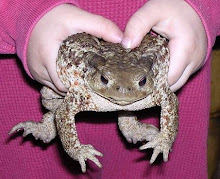
2005 was a bad year for the Marignolle vineyard.
In a usually unsuccessful attempt to balance the tied-to-the-land needs of a small farm and other family/marital duties we usually spend some months during the Summer away from Florence in Santa Cruz, California. While the Monterey bay area is a paradise for good food and organic vegetable and fruit production-not to mention great wines, being there in the SUMMER while our small farm is mostly abandoned is always a disaster.
When we are away, the vineyard is mostly abandoned to chance. Attempts to have "helpers" look after the vines have mostly failed. One sprayed a "little bit of pesticide" on my organic grapes "just to be safe" killing all the beneficial spiders and ladybugs and other insects that a few years of non-spraying had brought back. Another helper, a local farmer with much wisdom and years of experience just didn't like the way I was doing things and so pruned the grapevines during my absence to a different geometry, setting me back again by a year or so.
But 2005 was particularly bad. Another helper decided to "shorten" the vines to get rid of all those unnecessary leaves.
He cut the vines back to just above the grape clusters. So I returned to find these stubby little vines with a stem, a leaf, a grape cluster and then nothing.Since the sugars in the grapes come from the photosynthesis in the leaves, no leaves meant no sugars. Tied in with a cooler than usual late Summer the grapes hung on the vines and did......nothing. They didn't get riper, they didn't get sweeter. Even the birds wouldn't eat them.
We waited as long as we could; they were mostly ripe but bad weather was predicted and we thought it best to harvest.
We had the kindergarten class come out that Saturday to pick the grapes and it was a great day. We had a big picnic and the kids and their parents picked the grapes and tossed them into plastic crates. Usually we pick very carefully, picking off, cluster by cluster, any spoiled or damaged fruit, picking off the leaves or debris...it is the one real advantage we have over commercial wineries. But these were 5-year-olds. So leaves, spiders, branches and all the grapes all went in the box.
And it didn't really matter. While there was no mold, the grapes were unevenly ripe with lots of little green berries in what were supposed to be black bunches of grapes. But the worst was yet to come.
We usually and deliberately use very traditional methods. We crush by foot, ferment in small batches and intervene fairly little in the winemaking process. But we are very clean as mistakes mean spoiled wine or vinegar. We scour out the buckets with hot water and make sure everything that comes into contact with the grapes is as clean as possible. In this case it meant scrubbing the legs of lots of little kids too, anyone brave enough to hop in the crushing vat. Shoes off, legs scrubbed, clean socks put on, carried to the vat, socks pulled off, in you go. Crush, Crush, Crush. It was a great party.
But quietly, off in a corner one child discovered my compost pile. And seeing us dumping grapes in the vat crate after crate she decided to participate too. She managed to find a small bucket and a handful of compost and before anyone knew what was happening in went a bucket of finished compost into the freshly squeezed juice.
Winemaking isn't a sterile process. Wild yeasts on the grape skins are responsible for the fermentation and the grapes aren't washed so there are bits of soil, dust, bugs and spiders in every vat of wine made everywhere and the rising alcohol levels--we usually reach 13-14% alcohol levels are pretty protective. But compost in the must isn't a great idea.
But it was too late.
The choice was either dump it all out or make the wine anyway. We can't sell it anyhow and it seemed a shame to just pour it all out. So we made wine anyway.
Vino Rosso di Marignolle 2005. Marignolle (our hill and house name) 2005 Table wine. Alcohol 12% (those low sugar levels). Ruby red, very astringent, notes of blackberry branches, pruning shears, children's laughter and a hint of something else...........that I just can't place.
It's actually not that bad and since I made it I drink it, When we have friends over who insist on tasting it they always say it's good but I always notice that for the first time since we started making wines, there is always still half a bottle left on the table when dinner is over.
.

The toad is crying! Guess there is always next year....
ReplyDelete